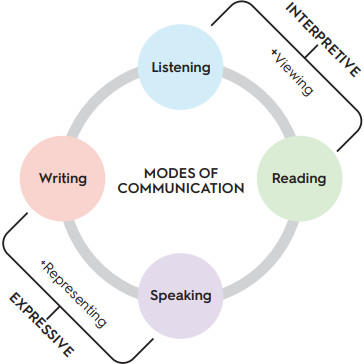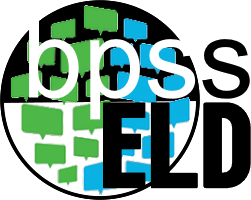BPS District (ELD) Standards Book
Introduction
The BPSS (ELD) English Language Development Standards course in Learnbps is
Bismarck Public School District's current progress on prioritizing and deconstructing standards to provide a consistent, clear understanding of what students are expected to learn. The standards are designed to provide guidance so teachers and parents
know what they need to do to help students. Plus help students reflect on the knowledge and skills that they need for success.
The Components of The WIDA ELD Standards Framework
The WIDA ELD Standards Framework consists of four components: Standard Statements | Key Language Uses | Language Expectations | Proficiency Level Descriptors , each explored in the colored blocks below. These four components are like building blocks of language development, and range from broad to narrow in scope. They work together to make a comprehensive picture of language development:
WIDA (ELD) Standard Statements conceptual framing of language and content integration
Five WIDA ELD Standards Statements provide the broadest conceptual framing and illustrate the integration of content and language. The standards statements show language use in the service of learning—in other words, language for thinking and doing. They address the language of schooling.

Key Language Uses prominent language uses across disciplines
Key Language Uses describe prominent ways that language is used in school, across all disciplines. When educators make choices about how to integrate content and language, the Key Language Uses can help provide focus and coherence
- KLU: Narrate highlights language to convey real or imaginary experiences through stories and histories. Narratives serve many purposes, including to instruct, entertain, teach, or support argumentation.
- KLU: Inform highlights language to provide factual information. As students convey information, they define, describe, compare, contrast, organize, categorize, or classify concepts, ideas, or phenomena.
- KLU: Explain highlights language to give an account for how things work or why things happen. As students explain, they substantiate the inner workings of natural, man-made, and social phenomena.
- KLU: Argue highlights language to justify claims using evidence and reasoning. Argue can be used to advance or defend an idea or solution, change the audience’s point of view, bring about action, or accept a position or evaluation
of an issue.
Language Expectations goals for content-driven language learning
Language Expectations set goals for content-driven language learning. They add specificity to the ELD Standards Statements and Key Language Uses and make visible the language associated with the content areas. Language Expectations
are the statements most similar to what educators generally find in academic content standards
In the Language Expectations, the four individual language domains (listening, speaking, reading, and writing) are consolidated into two more inclusive modes of communication: interpretive and
expressive.
- The interpretive communication mode encompasses listening, reading, and viewing
- The expressive communication mode encompasses speaking, writing, and representing

Proficiency Level Descriptors
a continuum of language development across six levels
Identifier Explanation
ELD-MS.LA.6-8.narrate.interpretive
The Bismarck Public School District Standards-Based Progress Report displays grades at the concept level. Therefore Bismarck Public School District has modified the North Dakota DPI Identifiers to fit into our student information system PowerSchool for Standards-Based grading. Above is a BPS-Standards ELD identifier with smaller muted text showing the addition to the identifier that are the components that BPS adds to the State code.
ELD-MS.LA.n.i
click on the identifier components for more explanations
ELD-MS.LA.n.i Interpret language arts narratives.
Note how the identifiers auto-link to the standards global glossaries.

